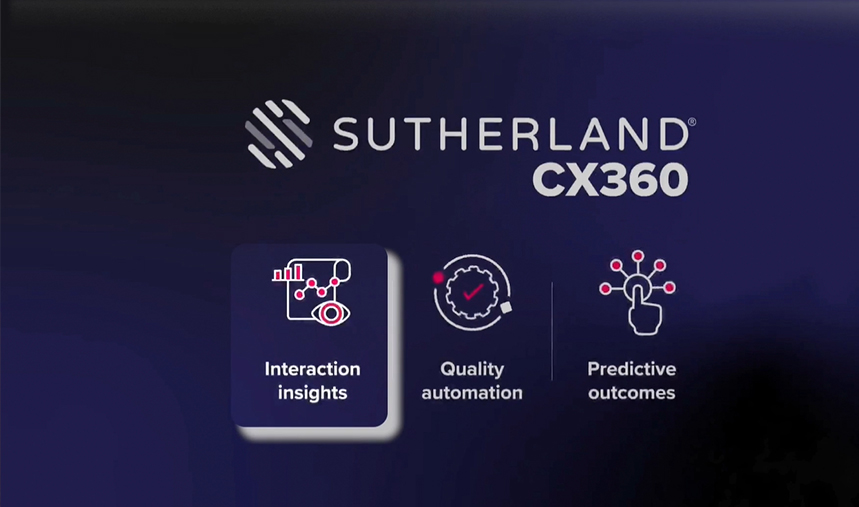You care deeply for your customers. You’re honored to serve them. You know giving them products they can love — and support they can trust — lies at the very heart of your business.
You’ve made the right investments, hired the best in customer care & support and pride yourself in a culture passionate about CX. Your business is the epitome of a customer-centered organization, with teams working hard to keep it that way.
And yet, when something goes wrong — or a customer needs more from you to maximize their experience — you still find yourself wondering how you can make your customers’ experiences predictably excellent.
But why?
If you’ve spent any time trying to answer that question, the answer you come up with is likely something like this:
No matter how well our business prepares to solve customer problems, so much of “getting it right” involves either chance or unpredictable things we’re simply unable to control. Things like:
- The mood of the customer and the complexity of their query
- The agent’s knowledge, empathy and natural ups and downs in performance level
- The strength of the service team’s ability to network and cooperate across function
- The time of year and the volume of requests
- Or even the weather that day
The bottom line? You are constantly wondering how best to reduce uncertainty and respond to the unexpected, even when you have great confidence in the abilities of your service agents.
Augmenting Humans With AI Turns Problem Solving From an Art Into a Science
While chance — and the uncertainty of educated guesswork — is likely to always play a role in customer experience outcomes, advances in technology are steadily reducing its role.
Today’s AI technologies used in customer care & support environments help human service agents solve customer, employee and other end-user problems in real-time with greater effectiveness, efficiency, accuracy and certainty. As a result, the people involved in doing the work can spend less time solving each problem.
In fact, a patent-pending technology that digital transformation leader Sutherland uses can — on a turn-by-turn basis within a conversation — actually predict the eventual CSAT or NPS rating associated with each customer interaction as it’s taking place.

Every conversation that runs through a customer support team also runs through the technology’s semantic deep learning engine. The conversation is labeled with insight and predictive KPIs while still underway. That means management teams can step in to proactively support agents at the right moment before a conversation goes south (which some inevitably do) and the customer decides to vent on social media.
Brands can look into every conversation of every agent to discover the key moments behind a rise or drop in customer satisfaction. Plus, they can understand which events and conversational behaviors have the biggest performance impact — even predicting the number of CSAT and NPS points to be gained while estimating savings in time and money.
You can also grow conversion rates when customer care issues are more quickly identified and the right solution is offered. This doesn’t just mean happier customers, but more revenue as well.
What Better Agent Assist AI Can Mean for Your Business: Use Cases
The right agent-assist technology in the contact center (and beyond!) can serve many use cases, helping your brand answer a whole host of questions. Here are just a few of them:
How can I course correct a conversation to get a better outcome?
Data on how a conversation is going is available in real time. That’s what makes actual in-conversation course correction possible. This predictive data is an external signal, so an agent doesn’t have to guess whether or not a conversation is going well.

This real-time feedback is particularly relevant (and helpful!) in the middle of the CSAT curve since the extremes of happiness or unhappiness within a live interaction are typically obvious. Managers can even view key moments in a dialogue, along with predictive CSAT, so they can step in when necessary.
Can I optimize conversations with real-time answer suggestions?
Not only can you improve conversations in real-time by suggesting proven answers previously used by peers — thereby boosting an agent’s confidence and saving time with precise phrasing — you can suggest answers in real-time on topics that may be less familiar to one agent than another. Responses can be reused with a shortcut key or a single click, without having to type it all out.
Plus, an AI can detect context, or other clues in the conversation stream, that the agent may have missed. It’s like providing every agent a second set of ears.
Why aren’t my prospects converting?
Brands can uncover the root cause of sales abandonment. When customers reach out about services, they’re often also prospects for new products and services. Even a slight increase in their conversion rates can increase revenue by extraordinary amounts.
AI solutions like Sutherland’s can automatically surface which conversations see a drop in conversion rate and spot what those conversations have in common. It can quantify the number of conversations that end after particular topics are addressed in specific ways, giving the care & support team a reason to change how they’re working.
From initial problem identification to building a business case for a solution without the technology, this process can take months. With it, a week or less.
Why is my CX dropping?
You can better learn how to get Marketing to act on your CX initiatives. AI technology can help you more quickly discover the root cause for customer behavior anomalies like, say, a high correlation between people with low NPS scores and those who may have been turned down for a recent marketing promotion.
The technology can help with automatic summarization of the issue, precision agent coaching and improved interdepartmental collaboration.
What are my customers saying?
You can gather instant customer feedback for efforts like new product launches. Historically, organizations have measured CX success with customer surveys and interviews, which take time to gather and do not reveal the intricacies of customer relationships.
AI technology can provide a real-time voice of the customer feed allowing product, marketing and customer operations to make quick decisions to bolster NPS. Conversation clustering can solve for current pain points and help prevent future hiccups.
You can listen more effectively to your customers where they talk the most — the contact center.
How can I decrease my support calls?
It’s sad but true. Far too many customer support queries are about password reset issues. And while this information is sure to get passed along to the IT team, IT is often backlogged with a host of other problems competing for its attention.
But by being able to quickly pull together a complete picture of the problem, specific cases, impacts on operational costs and experience metrics, a strong business case can quickly be made to secure the help needed.
Why is there a surge in my support calls?
Every season brings new customer issues, product updates, unanticipated priorities, you name it — all of which can bring an unexpected surge of customers to your contact center. It’s nearly impossible to predict everything that could happen. AI technologies allow you to do the next best thing: identify surges in customer conversations and manage them before they spiral out of control.
Sutherland’s Recent Acquisition of Augment CXM Further Empowers You to Transform CX
At Sutherland, we augment the work of human beings with the very best in AI and intelligent automation. We use “Human-in-the-Loop” training models — that is, models that make smart use of AI by combining it with human intelligence to ensure proper performance and optimize human-plus-machine partnerships.
Founded in 2017, Augment CXM’s deep learning engine has delivered tangible KPI results to a wide range of Fortune 1000 brands. In fact, Sutherland and Augment CXM have enjoyed a strategic reseller partnership since 2019. The acquisition integrates Augment’s technology into Sutherland’s AI solutions portfolio — furthering our commitment to delivering transformational business outcomes.

While delivering the right automaton is always critical, the ability to augment the performance of human workers with AI is the future of work — and a catalyst for ongoing success. It brings more intelligence to human work, in real-time. The combination of human plus machine compounds value for both end consumers and the brands that serve them.
Click here to learn more about Sutherland’s recent acquisition of Augment CXM’s deep learning engine builds on Sutherland’s AI-based agent assist technology, allowing your brand to deliver transformative customer experiences. Or visit Sutherland Conversational AI.
Improve Customer Satisfaction & Increase Revenue

Benjamin is a purpose driven and outcome-focused product manager. He is comfortable working across the full product “stack” – from vision/strategy/brand through the financials and from the database up to the UX/UI and love engaging at multiple levels on a regular basis.






